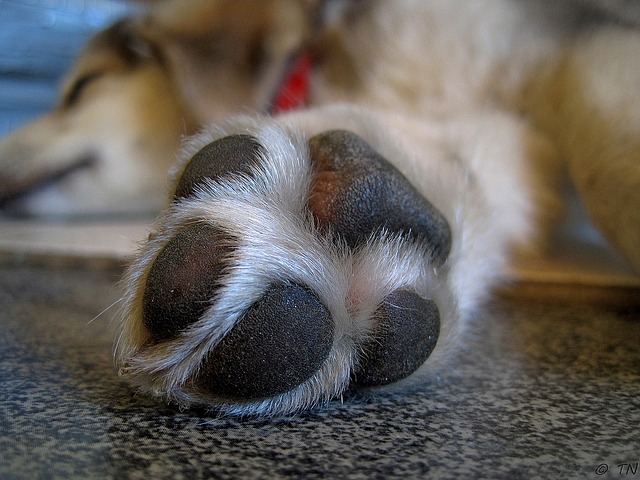The paw is most often exposed to various injuries and diseases that are usually the result of infection (it is in contact with impurities from the ground). In anatomical terms, the paw is of a very complicated structure, and injuries can include skin, cartilage and even bones.
The main symptoms of paw injuries are limping and licking the affected area. Causes of injury can be contact with corrosive substances, such as acids and alkalis, then wounds (cuts and stab wounds), fractures of one or more fingers.
In addition to injuries, purulent fistulas on the paws are possible, which are caused by a foreign body that usually enters under the skin between the toes. The grass is often pulled in this way, so it is necessary to inspect the paws every day and remove any grass that is stuck in the pet’s skin.
Insect stings are also possible, which cause visible, differently large, local reactions (swelling, pain, redness) at the site of the sting. Only in sensitive individuals do allergic reactions occur, which can be noticed at the site of the sting or systemic. After the bee sting, it is necessary to remove the sting as soon as possible.
Furthermore, it is possible to stretch the ligaments, rupture the bones without moving the parts and consequently their wrong healing.
The bite can cause bite wounds that have a small entry wound but can lead to large abscesses. The entrance wound closes quickly, and in anaerobic conditions, bacteria introduced by the ball multiply, which results in the formation of abscesses. An abscess is characterized by swelling, tempering, and fluctuation, and once matured it can rupture through the skin, where pus discharge and much less soreness are seen.
Applying “infection ointment” can have a positive effect on external injuries, but not on internal injuries to muscles, tendons, and ligaments. I would definitely recommend additional examinations at the veterinary clinic for pets, for a more complete diagnosis.





